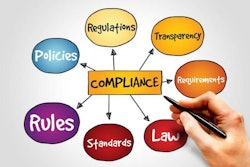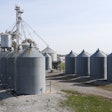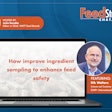
Feed mills are considered critical infrastructure in the U.S., and feed mill managers should take steps to protect their mills against acts of terror or acts of nature that could pose a threat, according to Michael Waters, a protective security adviser for the U.S. Department of Homeland Security (DHS).
Waters spoke March 17 at USPOULTRY’s Feed Mill Management Seminar in Nashville, Tennessee. Waters is one of 93 protective security advisers nationwide who work with the National Protection and Programs Directorate, which is part of the Office of Infrastructure Protection in the DHS.
DHS security advisers deal with facility and infrastructure protection, and provide outreach, training and education to better protect critical infrastructure sectors, such as food and agriculture, water and wastewater systems, and chemicals.
“We need to form a partnership with the private sector,” Waters said.
As part of the outreach, training and education offered by DHS, protective security advisers visit critical infrastructure sites and review vulnerabilities.
“During these visits, that’s where it starts,” Waters said. “We offer to come out and help and talk about critical infrastructure protection.”
The visits are followed up with an Infrastructure Survey Tool (IST), which is a Web-based vulnerability survey that applies weighted scores to identify vulnerabilities and trends across sectors. The IST allows for consistent collection of security information and highlights areas of potential concern.
The IST then becomes a planning tool to help site managers learn how they can better protect their infrastructure by guiding them through many areas of protection, from physical security to protective measures.
Using the IST’s online dashboard, feed mill managers are able to see facility-specific information obtained through the survey and compare their facility with other similar facilities in the same sector.
The dashboard will draw attention to a facility’s components that are above or below the sector average that may need additional attention. The dashboard also allows each facility to individually assess risks, taking into consideration threats, assets that need to be protected, and facility characteristics.
To learn more about the IST or to set up a visit to your feed mill from a protective security adviser, go to www.dhs.gov/criticalinfrastructure or email [email protected].


















